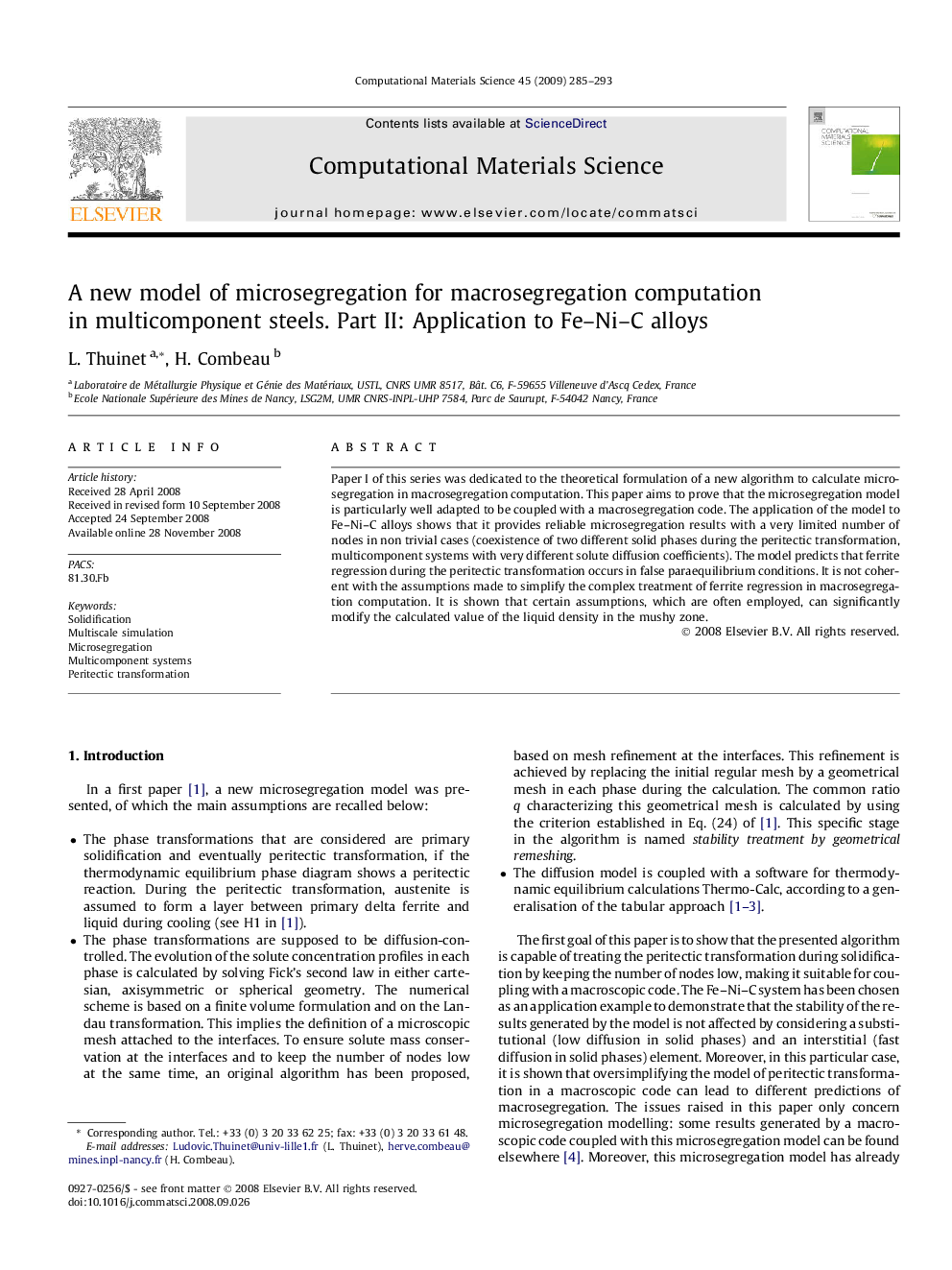| Article ID | Journal | Published Year | Pages | File Type |
|---|---|---|---|---|
| 1563397 | Computational Materials Science | 2009 | 9 Pages |
Paper I of this series was dedicated to the theoretical formulation of a new algorithm to calculate microsegregation in macrosegregation computation. This paper aims to prove that the microsegregation model is particularly well adapted to be coupled with a macrosegregation code. The application of the model to Fe–Ni–C alloys shows that it provides reliable microsegregation results with a very limited number of nodes in non trivial cases (coexistence of two different solid phases during the peritectic transformation, multicomponent systems with very different solute diffusion coefficients). The model predicts that ferrite regression during the peritectic transformation occurs in false paraequilibrium conditions. It is not coherent with the assumptions made to simplify the complex treatment of ferrite regression in macrosegregation computation. It is shown that certain assumptions, which are often employed, can significantly modify the calculated value of the liquid density in the mushy zone.
